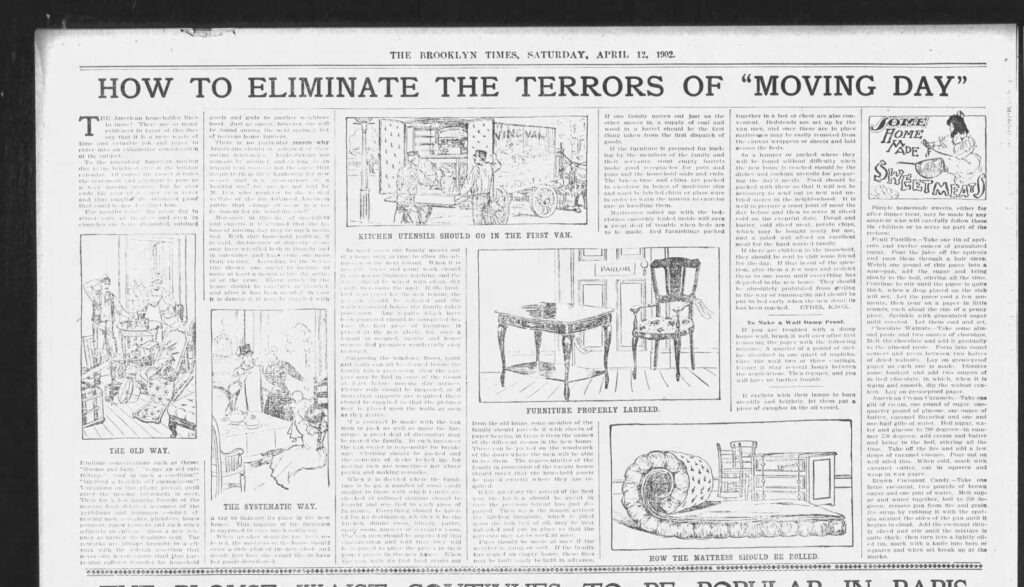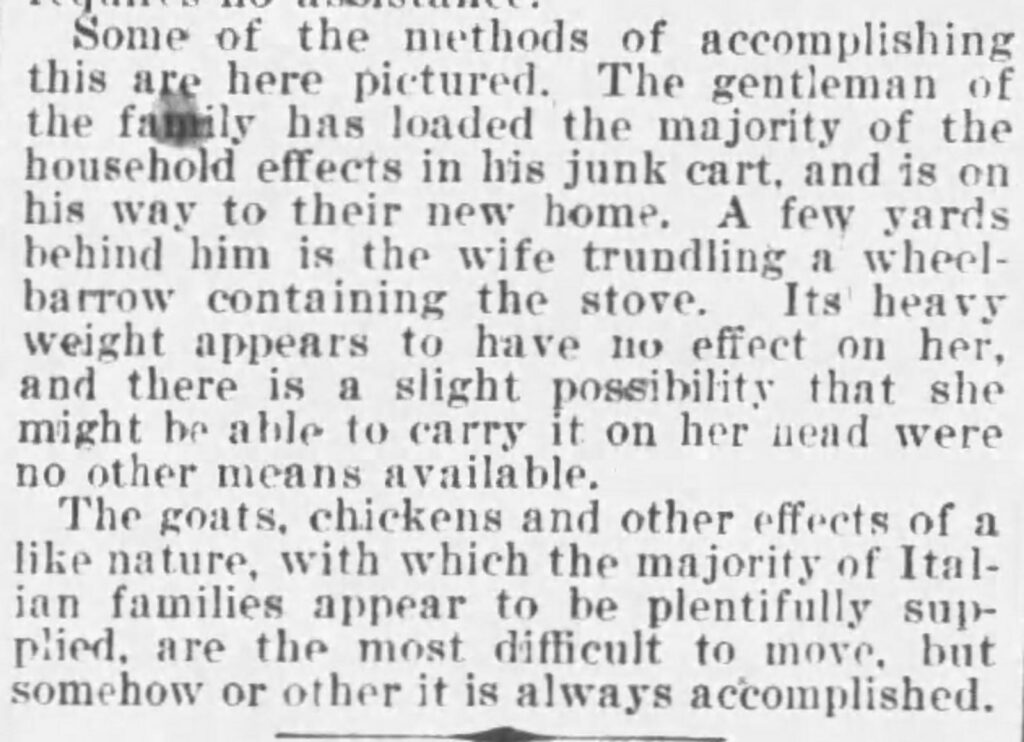The fascinating origin of National Moving Month

Moving soon? Get organized with our free moving checklist.
In the records of American urban history, May 1 once stood as a day of communal upheaval and chaos, known simply as “Moving Day.”
From the bustling streets of New York City to other metropolises across the nation, this singular day marked a collective struggle as leases expired en masse, compelling all residents to move simultaneously.
New Yorkers are known for their resilience today, but the same was true in the 1800s. Envision the people’s resilience: carts, horses, wagons, and wheelbarrows navigating congested dirt roads as individuals, families, and pets persevered to transition to their new homes.
Moving Day, from the 1820s until the dawn of World War II, was a dreaded fixture on the calendar, synonymous with logistical nightmares, confusion, and (eventually) settling in.
Frances Trollope, mother of Anthony Trollope and author of the not-very-flattering “Domestic Manners of Americans,” published in 1832, experienced Moving Day firsthand. “The city… has the appearance of sending off a population flying from the plague, or of a town which had surrendered on condition of carrying away all their goods and chattels….more than one of my New York friends have built or bought houses solely to avoid this annual inconvenience,” she wrote.
Eliminating Moving Day “terrors”
As Moving Day loomed annually, efforts emerged to alleviate its burdensome grip. News articles circulated, advocating for eliminating its “terrors” and imparting wisdom on efficient packing techniques.

Article from The Brooklyn Times – April 12, 1902
Most New Yorkers could not afford a moving van or cart, so they relied on pure ingenuity to move their belongings from one place to another. They utilized junk carts and wheelbarrows; some even balanced stoves on their heads and walked along.

Snippet from The Brooklyn Citizen – May 3, 1896
By February 1 each year, “Rent Day,” landlords would disclose any impending rent hikes, affording tenants a scant three-month window to secure an alternative home or negotiate terms.
Before the 19th century, when New York was smaller, the custom of mass moving on the same day had a moderate impact on street traffic. However, due to industrialization and immigration, the city’s population rose dramatically in the 19th century, magnifying the disruptive nature of Moving Day.
Yet Moving Day was not merely a personal ordeal but a barometer for the housing market’s health. Quantifiable metrics, such as the influx of vans and wagons or the tally of disconnected phone lines, offered insights into the market’s ebb and flow.
The end of an era
Moving Day in New York City persisted into the early 20th century, with professional movers gradually replacing DIY efforts.
The New York Times noted that by 1856, there had been some erosion of the strict adherence to the custom of Moving Day, as some people moved a few days before or after the traditional day, creating, in effect, a “moving week.” Then, once the economic depression of 1873 ended, more housing was built, dropping housing prices. Subsequently, people had less of a need to move as often.
Public resistance to Moving Day was also strong – and growing stronger in the 1920s and 1930s. Eventually, the custom began to disappear after World War II, which reduced the labor pool and implemented rent control measures. Fast-forward to July 1945, when a headline in The New York Times declared, “Housing Shortage Erases Moving Day,” marking the end of an era.
Honoring the past with National Moving Month
Today, the tradition of relocating en masse has evolved into what we now celebrate as National Moving Month.
Stemming from the annual upheaval of May 1st, this month-long observance honors the historical significance of communal transitions while welcoming the onset of the summer moving season.
For Updater, National Moving Month serves as a time to recognize the enduring customs of moving – much has changed, but much has stayed the same. It’s also a time to express our gratitude to moving companies and embrace the opportunities for new beginnings that accompany each move. It’s a time to reflect on the journey of our collective past while embarking on the adventure of our individual futures.
For those packing up this summer – happy moving! We’re here for you.
Moving soon? Get organized with our free moving checklist.
Internet and TV tips
Switching providers and don’t know where to start? We can help.












